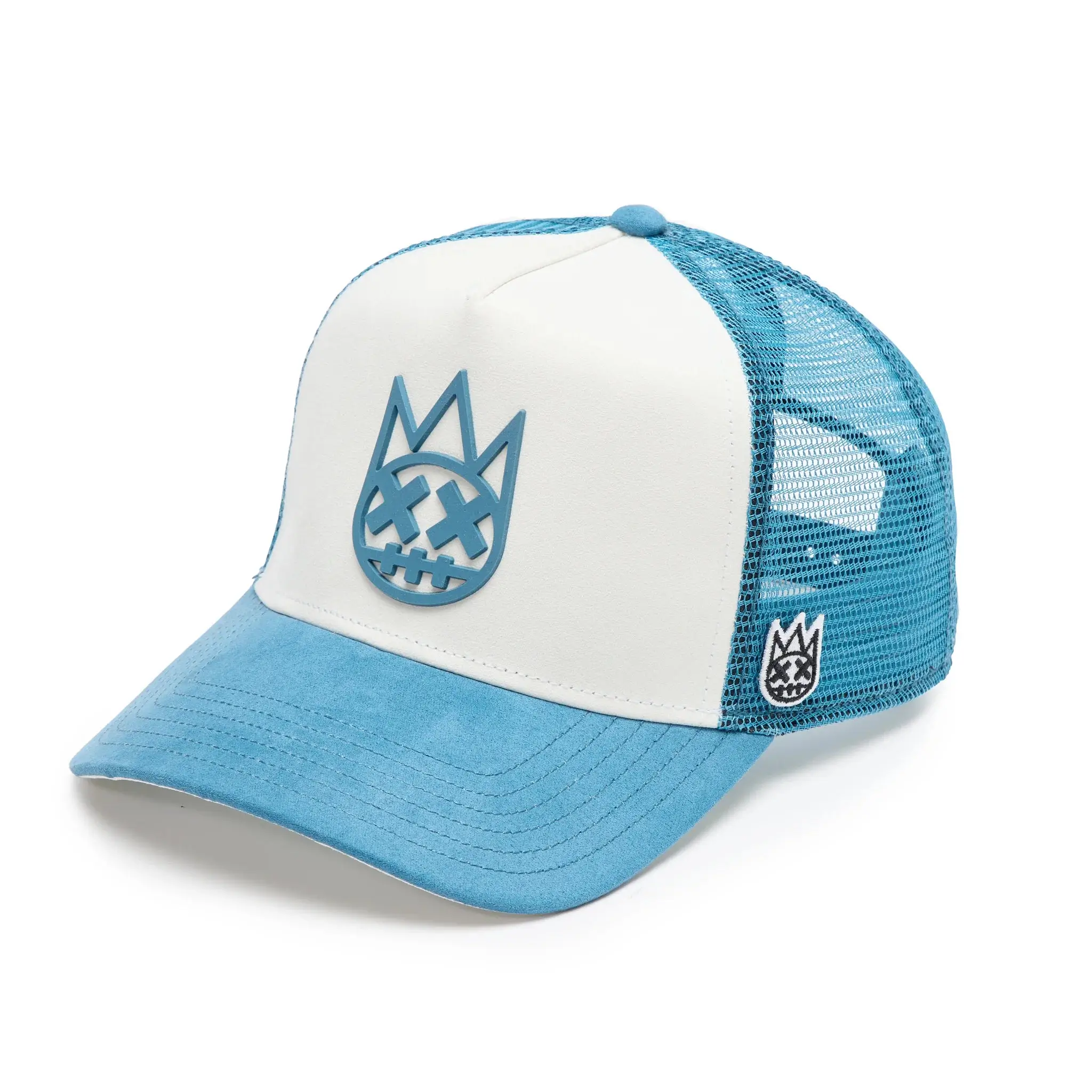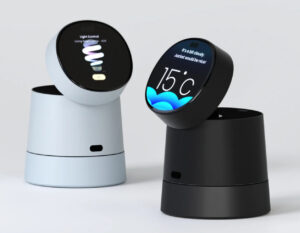
In an industry obsessed with novelty, few designers have made continuity feel as radical as Marine Serre. Since her 2017 debut collection, Serre has been fashion’s prophet of future sustainability—her clothes not merely garments, but arguments: for upcycling, for planetary urgency, for finding meaning in material. Now, as she launches Marine Serre MAISON, a lifestyle extension of her fashion brand, the designer takes a characteristically thoughtful step beyond clothing. Her inaugural offering is not furniture, nor fragrance, nor abstract “home” branding—it is tableware, and it is steeped in cultural history.
In mix with Faïencerie de Gien, one of France’s oldest and most storied ceramic makers, Serre introduces a capsule collection that includes dinner plates, dessert plates, coffee cups with saucers, and mugs. All are produced using traditional techniques in Gien’s Loire Valley workshops. The signature crescent moon that has become synonymous with Serre’s clothing now adorns ceramic surfaces. But unlike the futuristic curve of her bodysuits or armorlike outerwear, the motif here lives quietly—nestled into the glaze of hand-finished pieces meant not for display, but for daily ritual.
This is more than a product drop. It is an act of cultural curation—a continuation of Serre’s larger design philosophy, where the everyday is elevated and the past is not discarded but reimagined.
The Maison is Born
Marine Serre MAISON did not emerge out of trend or pressure. In her own words, “Extending into lifestyle felt inevitable.” And indeed, for a designer so concerned with how objects live over time, how they interact with the world, and how they accumulate memory, the home was always going to be part of the story.
But this is not the home as aesthetic showroom. Serre’s idea of “maison” is neither Pinterest-perfect nor aspirational in the bourgeois sense. It is intimate, lived-in, tactile. The collection with Gien, launched on June 23rd at marineserre.com, begins her vision with a tangible and symbolic object: the plate. That most functional of surfaces becomes a new canvas for her philosophy—a place where form and function, heritage and modernity converge.
Each piece in the capsule carries both the visual clarity of Serre’s design language and the subtle authority of Gien’s history. Established in 1821, Faïencerie de Gien has long supplied European aristocracy and royalty with fine faience. Its work has appeared in the Paris Métro’s iconic tilework and in the dining cars of the Orient Express. It is, quite literally, part of the fabric of French cultural life.
For Serre to partner with Gien is to embed her aesthetic into a lineage of French domestic design. But it is also to challenge that lineage—to reframe what elegance looks like in an era of ecological precarity and shifting cultural values.
The Crescent Moon, Recast
In fashion, Serre’s crescent moon has come to signify more than branding. It has become a marker of identity—feminine, mystical, radical, and sharp. Appearing across skintight garments, gloves, eyewear, and leggings, the symbol has adorned both celebrities and protestors, becoming a shorthand for resistance wrapped in design.
Translating that emblem from skin to surface—from the body to the table—changes its implications. In ceramics, the moon becomes part of a quieter, slower experience. It decorates the edge of a coffee saucer or the basin of a soup bowl, appearing between bites and sips, more companion than icon.
The gesture is intentional. It’s a way of letting design exist not only in the spectacle of the runway or the flash of Instagram, but in the rhythm of daily life. It invites intimacy. It asks that we not only wear Serre’s world but live within it—share it with guests, stack it on a shelf, carry it with us into the habits that make a home.
This transformation of symbol to substance recalls the Arts and Crafts movement of the late 19th century, which rejected industrial mass production in favor of artisanal, beautiful utility. Like William Morris and his contemporaries, Serre treats domestic objects as sites of philosophical expression.
French Heritage, Rethought
Faïencerie de Gien has survived revolutions—political and aesthetic alike. The factory, located in the heart of the Loire, has maintained centuries-old techniques: local clay, hand-finished glazing, careful kilning, and delicate pigment application. Its signature is precision without sterility, elegance without excess.
Marine Serre’s own brand has often employed radical upcycling, transforming vintage textiles into sculptural garments. The collaboration with Gien is thus more than symbolic; it is methodologically aligned. Both practices believe in preservation—not nostalgia, but renewal.
The tableware collection uses upcycled ceramic bases, repurposing existing Gien pieces into new forms. These aren’t merely designed; they are re-composed. The act of reclaiming, once central to fashion, now moves into the home. The result is a tableware set that feels both contemporary and antique—objects that have already lived, and now live again.
There’s a particularly French elegance to this approach. France, a nation where culture and utility often entwine, where the ritual of dining is a daily art form, provides the ideal context for such a project. The connection becomes a dialogue between two French traditions: decorative arts and avant-garde fashion. It’s a cross-century conversation conducted in porcelain and glaze.
Beyond the Capsule: Fashion’s Shift to Lifestyle
Marine Serre is not the first designer to extend her brand into the home. From Virgil Abloh’s IKEA capsule to Raf Simons’ work with Kvadrat and Calvin Klein Home, the last decade has seen fashion increasingly blur into lifestyle. But Serre’s MAISON avoids the pitfalls of mere branding.
Too often, lifestyle lines reduce a designer’s vision to surface aesthetics: logos on towels, fonts on candles, patterns on throws. In contrast, Serre approaches lifestyle as a continuation of her intellectual and material practice. The ceramic pieces are not just stamped with a symbol; they are part of a holistic cosmology.
Where others might commercialize, Serre recontextualizes. She brings the same questions that animate her fashion—What is waste? What is ritual? What is beauty in the Anthropocene?—into the living room and onto the breakfast table.
That philosophical seriousness doesn’t mean the pieces are austere. On the contrary, they are elegant, warm, and deeply useable. They affirm that function and art need not be opposed—that the plate you eat from can also be a site of cultural resistance, joy, and memory.
Daily Use as Daily Politics
Marine Serre has always emphasized reuse, not as a limitation but as a method. In her clothes, repurposed materials are treated with reverence and innovation. Denim scraps become sculptural coats. T-shirt leftovers become intricate bodysuits. She sees value where others see waste.
This ethos is carried into MAISON. “Gien represents the craftsmanship we value—thoughtful creation in a fast world,” Serre explains. “Our crescent moon now lives on objects meant for daily use, continuing our practice of giving existing elements new purpose.”
That idea—daily use as a political act—undergirds much of Serre’s work. In a capitalist culture that privileges the new, Serre’s insistence on continuity, on objects that endure and evolve, becomes subversive. She asks us to reconsider our habits: how we dress, how we consume, how we host, how we care for things.
Eating, in this frame, becomes more than consumption. It becomes ritual. The plate, often the most ignored element of a meal, becomes central. It carries not just food, but a legacy of labor, material, design, and intention.
Historical Reverberations: The Decorative Arts in Dialogue
Marine Serre’s move into tableware also invites comparison with historic intersections of art, craft, and domesticity. The Bauhaus, for instance, emphasized the unity of fine and applied arts—where ceramics, furniture, and textiles held equal stature to painting and sculpture. Figures like Anni Albers and Marianne Brandt saw domestic objects as opportunities for innovation and aesthetic depth.
Similarly, Serre’s MAISON capsule insists on design integrity across disciplines. The crescent moon doesn’t lose its power when it migrates from mesh tops to porcelain. It retains its visual clarity and symbolic charge. It suggests that a home object can be as intellectually resonant as a fashion look or a gallery work.
The Gien collaboration also echoes the tradition of French porcelain houses collaborating with artists. In the 20th century, Sèvres worked with figures like Alexander Calder and Pablo Picasso to bring modern art into the domestic sphere. Serre’s project continues this lineage, not as homage, but as evolution.
What Comes Next for MAISON?
If the Gien collaboration is any indication, Marine Serre MAISON will continue to privilege slowness, reuse, and cultural dialogue. The future may include textiles, lighting, or even furniture—but always filtered through Serre’s particular lens: not just what is beautiful, but what is necessary.
In a time when lifestyle branding often flattens design into commodification, Serre offers a different path. She makes the home not a space of escape or display, but of engagement. Her vision of domesticity is not passive; it is participatory, deliberate, and intimate.
Marine Serre’s MAISON is not about perfection. It’s about meaning. It invites us to reconsider how we live, how we eat, and how we assign value to the objects around us. It asks that we take beauty seriously—not as luxury, but as a right. Not as branding, but as belonging.
A Table Set for the Future
The launch of Marine Serre MAISON, beginning with her collaborative capsule with Faïencerie de Gien, marks a turning point in how fashion can expand into lifestyle. It is not a sidestep, nor a soft landing. It is a deepening.
By choosing tableware as her first medium beyond fashion, Serre signals her belief in the ordinary as sacred. In a cup, a plate, a saucer, she finds a way to extend her values—ecological, aesthetic, philosophical—into our daily lives.
The crescent moon, once seen under the lights of a runway, now glows faintly under morning sun, filled with coffee. It remains, as ever, a symbol of continuity, mystery, and change.
No comments yet.









